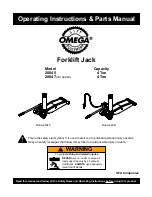
Creating/Running an “I” Test
An excellent way to test the tensions is by using the I test.
1. Using your Lettering/Digitizing software create a row of 40mm I’s, each to be sewn
with a different needle. Sew one “I”, change to the next needle, sew another “I”,
change to the next needle, and so on until all needle have sewn..
2. Turn the sample over and look at the back of the stitching. Proper tension would show
two thirds top thread color and one third bobbin thread.
Well Balanced Tension
The top row of I’s in the illustration above show properly
adjusted tension. Slight variations will occur, depending on
the fabric, backing, thread type and letter size.
Bobbin Tension Problem
The middle row of I’s in the illustration above show almost
no bobbin thread. All the letters have the same problem, so
the bobbin tension needs adjustment. Bobbin tension, since
it is controlled by one tensioning mechanism, will be
consistent from one needle to the next. In this example, the
tension should be looser.
Top Tension Problem
The bottom row of I’s in the illustration above show letters
that look quite different from one another. Top tension will
vary from needle to needle, since each needle tension is
controlled by three different tensioning points. Letters #1,
#2 and #7 show too much bobbin thread; letters #3, #4 and
#9 have hardly any bobbin thread showing; letters #5, #6
and #8 show properly adjusted tension.
BE
V
T Series
Mechanical
Guide
Machine Basics
1
- 1
4
Summary of Contents for BEVT Series
Page 1: ...Instruction Manual...
Page 15: ...1 Automat 3 2...
Page 74: ...3 Press the E Key to start loading designs A Key B Key C Key D Key E Key 6 17...
Page 148: ...Embroidery Machine BEVT series Mechanical Guide...
Page 156: ...BEVT Series Mechanical Guide Machine Basics 1 6 Z9 Sewing Head...
Page 159: ...1 9 Machine Basics BEVT Series Mechanical Guide...
















































